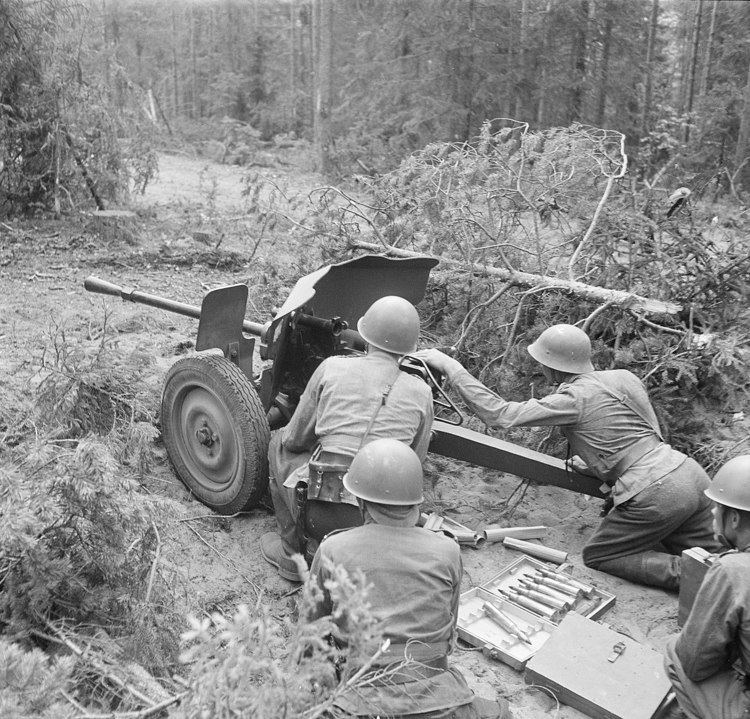Type Anti-tank gun Barrel length | Place of origin France | |
 | ||
Used by FranceNazi GermanyUnited KingdomKingdom of ItalyFinlandRomania Wars Winter WarWorld War II Weight 480 kg (1,058 lbs)(modèle 1934) | ||
The 25 mm Hotchkiss anti-tank gun was a French anti-tank gun that saw service in the first years of the Second World War.
Contents
Development
By the early 1920s the French Army had come to the realization that the armour-piercing capability of the 37 mm TRP infantry gun would be insufficient against modern tanks. In 1926 Hotchkiss proposed a 25 mm in-house design that was eventually accepted for service in 1934, under the designation canon de 25 mm semi-automatique modèle 1934 (generally shortened to canon de 25) . At the outbreak of World War II, it was the main anti-tank weapon of the French infantry. By May 1940, there were reported to be 6,000 in service with the French Army, although some formations were still waiting for their full allocation.
In action in the Battle of France in 1940, it was found that the projectile was too small to be very effective against German tanks, especially at longer ranges. It remained a useful weapon against armoured cars and other light armoured vehicles.
Foreign use
In 1935 the Hotchkiss 25 mm anti-tank gun was purchased for evaluation by the US Army. Turkey bought 400 examples of the gun during the interwar period.
When the British Expeditionary Force landed in France in 1939 it had insufficient numbers of anti-tank weapons such as the Ordnance QF 2 pounder. They were issued 300 canons de 25 which became known as Anti-Tank Gun, 25 mm. Hotchkiss, Mark I on 25 mm. Carriage, Mark I in British service. The BEF was fully mechanised and attempted to tow the weapon behind their vehicles, but quickly found that it was not robust enough, having been designed to be towed by horses. The solution was to use the gun as a portee, that is, carried in the back of a truck. It was the first artillery piece to be used in this way.
Examples captured by the German forces were operationally used under the designation 2,5 cm Pak 113(f). Some captured guns also made it into Italian service in North Africa as alternatives to the Solothurn S-18/1000, under the designation cannone da 25/72.
Finland purchased 50 French 25 mm M/37 antitank guns during Winter War, but only 40 of them were delivered in February 1940 through Norway. The remaining ten guns were captured by the Germans when they invaded Norway in spring of 1940. About half of the guns, which had arrived during Winter War, saw front line service during it and three of them were lost in battle. During the Interim Peace the Germans sold 200 captured guns to Finland. 133 of them were model M/34s and 67 were model M/37s, and they were designated 25 PstK/34 and 25 PstK/37, respectively. They were withdrawn from front line use by 1943.
